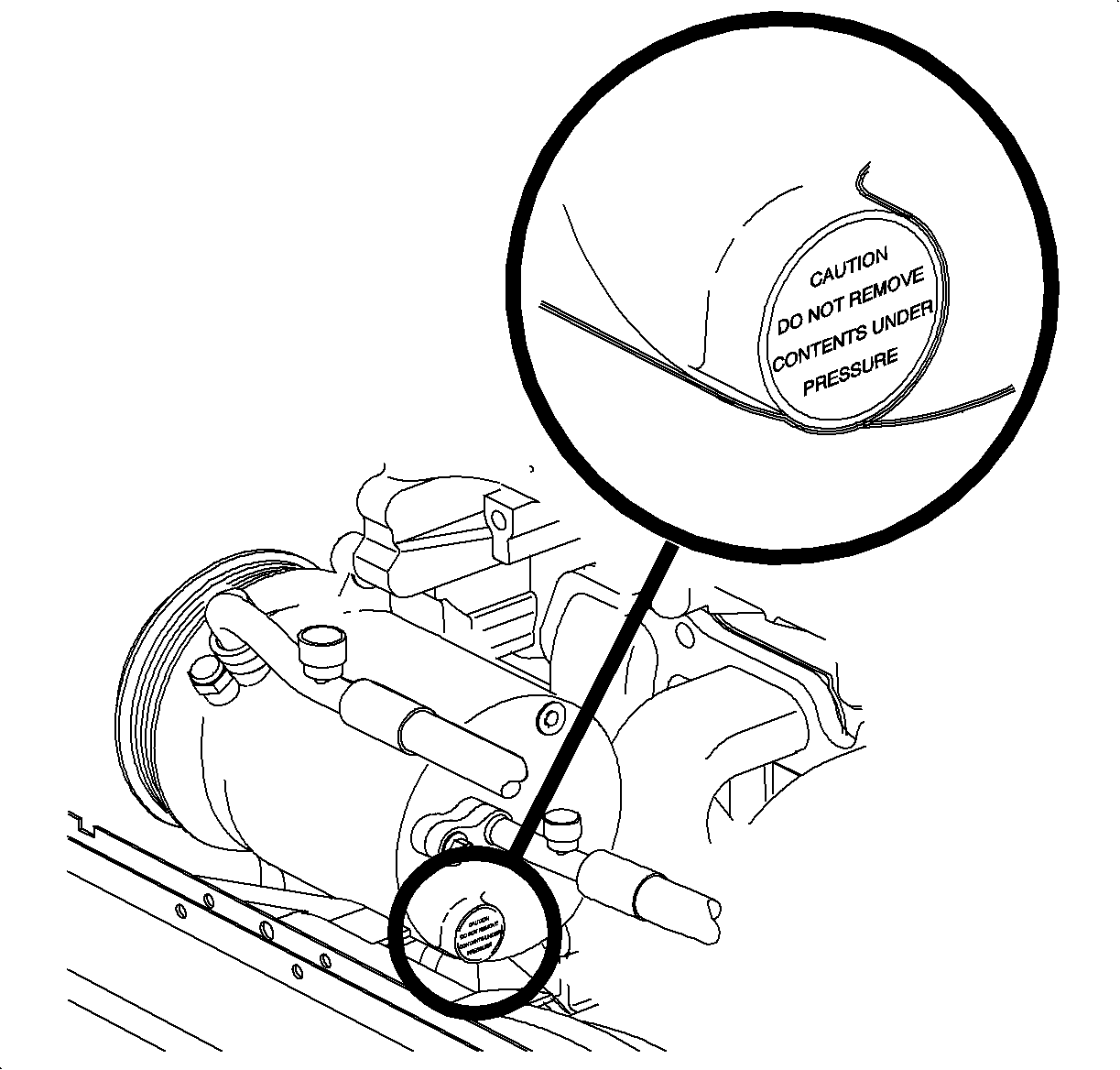Loss of Airflow From A/C Outlets after Extended Periods of Highway Driving

| Subject: | Loss of Airflow from A/C Outlets after Extended Periods of Highway Driving (Adjust A/C Compressor Set Point.) |
| Models: | 1994-1999 Saturns equipped with R-134a air conditioning. |
Condition:
After extended periods of highway driving, some customers may notice a loss of airflow from the A/C outlets.
Cause:
A/C compressor suction set point may be low for some customer usage and driving patterns, resulting in evaporator freeze after extended periods of highway driving.
Correction:
Adjust A/C compressor set point using the following procedure.
Procedure:
Notice: This procedure should never be repeated on the same A/C compressor. If condition is not corrected by this bulletin, refer to the diagnostic flow chart in the appropriate year "HVAC Service Manual."
- Confirm with customer that A/C system functions normally in all conditions, except extended driving at highway speeds.
- Locate the set screw on the rear head of the A/C compressor. The set screw will be covered with either a solid silver label or a silver label with the words: CAUTION! DO NOT REMOVE CONTENTS UNDER PRESSURE.
- Determine where the large slot in the set screw is located. The slot can be felt through the label with a screwdriver.
- Using a large-blade screwdriver, turn the set screw 1/4 turn clockwise as viewed from the rear of the compressor.
- Using a clean shop towel, wipe the surface area where the silver label is located. Make certain there is no debris or oil present.
- Install a new orange A/C refrigerant caution label P/N 21031284 over the old silver label that was cut in step 3a.
- Start the engine and inspect that the A/C system is functioning normally.
| • | If A/C system does not function normally at any other condition , refer to the A/C system diagnostic flow chart in the appropriate year "HVAC Service Manual." |
| • | If A/C system Functions normally during all other conditions , proceed to the next step. |

Important: Engine does not need to be running for the A/C compressor set point adjustment.
Notice: Do not remove this label.

Caution: Be careful to keep hands clear of the engine cooling fan. The engine cooling fan may operate unexpectedly.
Notice: If the silver label has been broken, or an orange replacement label is present, DO NOT continue with this procedure. Additional adjustment of the set screw could result in reduced A/C system performance at higher ambient temperatures.
| 3.1. | Using a utility knife, cut through the label for access to the slot screw (1). |
| 3.2. | Using a permanent ink marker, make a mark on the A/C compressor to indicate the current position of the set screw in relation to the compressor rear head (2). |

Caution: Do not turn the set screw on the back of the A/C compressor counterclockwise. The A/C system is under pressure and turning the set screw counterclockwise could cause the set screw and/or hot refrigerant/oil mixture to be discharged under pressure. The refrigerant/oil mixture can cause burns and/or bodily injury.
Notice: Do not turn the set screw more than 1/4 turn clockwise. Adjusting the set point changes the pressure at which the A/C compressor goes to minimum displacement. Increasing the adjustment beyond 1/4 turn clockwise will not make the system colder and could reduce A/C system performance at higher ambient temperatures.
Notice: To prevent the A/C compressor set screw from being adjusted again, the orange A/C refrigerant caution label P/N 21031284 must be installed over the old silver label.
Parts Requirements:
P/N 21031284 Label -- A/C Refrig Caution.
Claim Information
To receive credit for this repair during the warranty period, submit a claim through the
Saturn Dealer System as follows:
Case Type | Description | Labor Operation Code | Time |
|---|---|---|---|
VW | Adjust A/C Compressor Set-Point | T9769 | 0.3 hrs |
